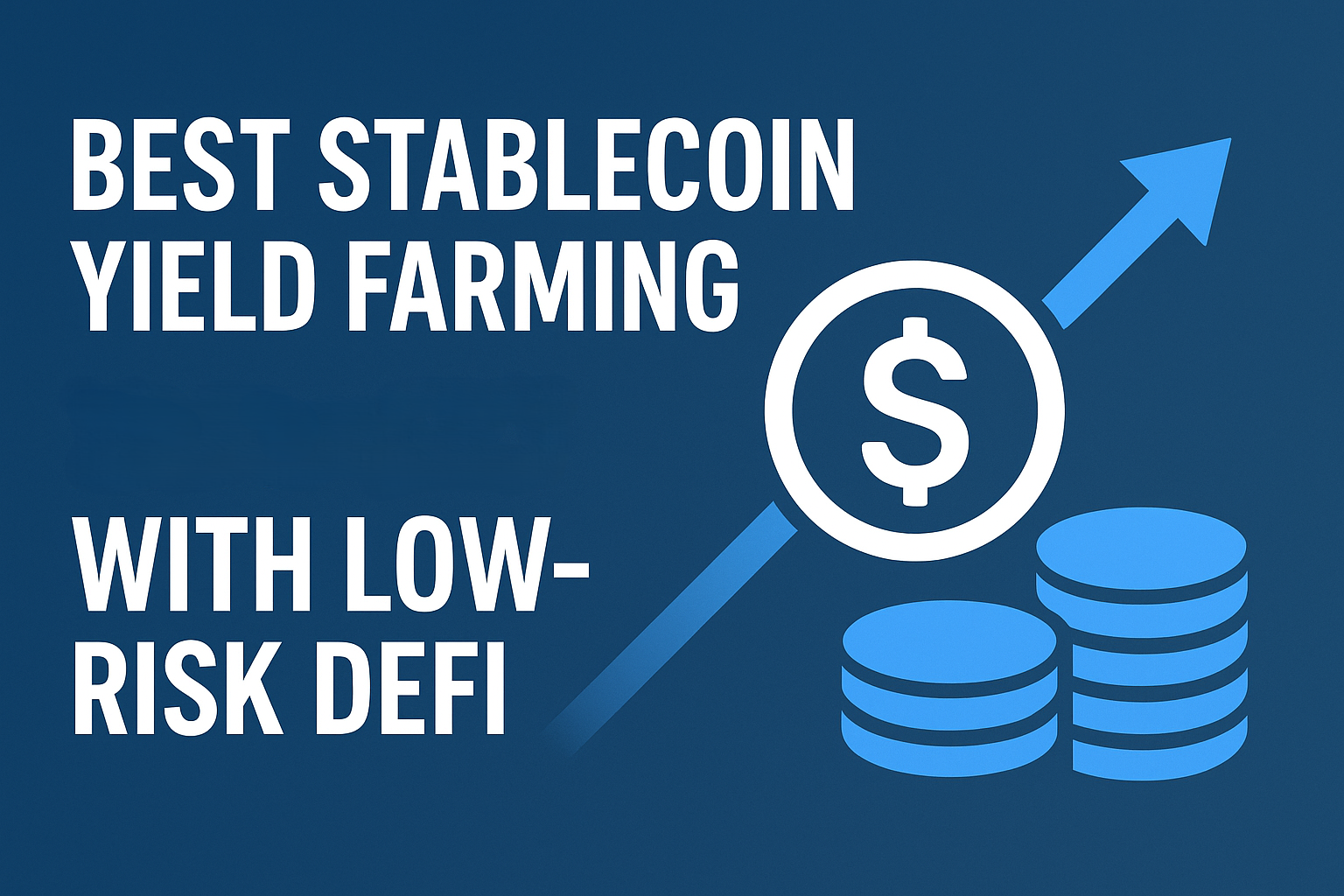This article focuses on low-risk yield farming strategies on audited DeFi protocols, using established, collateralised stablecoins (such as USDC, USDT, USD1 and USDS). We do not cover synthetic or algorithmic stablecoins, or complex high risk DeFi strategies. Our goal here is to explore safer ways to earn attractive yields from stablecoins that can beat traditional bank saving returns.
*Note: DeFi APYs are not guaranteed and can change significantly due to market conditions. Estimated APYs are as per values published on the DeFi website at time of writing. Page last updated on 17 October 2025.
Best Stablecoin Yields From Multi Asset LPs
You can earn yields from stablecoins by providing them to a decentralised exchange (DEX) liquidity pool (LP) that gives you a share of transaction fees and rewards. Using stablecoin LPs minimises the risk of impermanent loss that can occur with more volatile assets. Our top picks are:
- USDT-UDSC: Hyperion on Aptos ~35% APY
- Deposit USDT & USDC or use “Zap In” to swap single asset into the DEX liquidity pool. Manually claim LP rewards and swap to re-invest into the pool for compounding.
- Alternatively, Goblin Finance’s yield aggregator vault provides auto-reinvesting into the Hyperion pool for compounding and higher yields, but adds to the smart contract risk.
- USDT-USDC: Bluefin on Sui ~11% APY
- Deposit USDT & USDC or use “Auto-Swap” to swap single asset into the DEX liquidity pool.
- No yield aggregator vault for this LP as yes, so you will have to manually claim, swap and re-invest rewards for compounding.
- USDC-EURC: Beefy Finance (Blackhole) on Avalanche ~10% APY
- Deposits LP tokens into Blackhole DEX, swaps reward tokens for more LP, auto-reinvests for compounding and max yields.
- EURC is a euro-backed stablecoin issued by circle, similar to USDC ,with collateralised reserves.
Best Stablecoin Yields From Single Asset Vaults
The highest single asset stablecoin yields are usually offered by newer DeFi lending protocols that boost APY with their own reward tokens and yield aggregator strategies. More established DeFi protocols with longer track records and higher TVLs tend to have lower APYs and a lower risk, so you should consider the risk vs reward when choosing a platform. Our top picks are:
- USDC: Harvest Finance (Silo) on Arbitrum ~34% APY
- Supplies USDC to Silo – sUSDX lending vaults with earned rewards auto re-invested as USDC.
- Artbitrum layer 2 chain has lower gas fees than Ethereum main net.
- USDC: Beefy Finance (MEV Capital) on Avalanche ~8% APY
- Deposits USDS in lending protocol, auto swaps reward tokens to USDC for compounding.
- USDC or USDT: Maple Finance on Ethereum ~9% APY
- Lending to institutional borrowers. 2.2% in APY is reward token rather than USDC or USDT.
- 2 days for withdrawal processing but could be up to 30 days depending on market conditions.
- USDC: Beefy Finance (Morpho) on Base ~6%
-
- Deposits USDC in Morpho lending vault, auto-swaps reward tokens for compounding.
- Base layer 2 chain has much lower gas fees than the Ethereum main net.
-
Key Risks to Consider With Stablecoin Yield Farming
While stablecoin yield farming can be relatively safer than other crypto strategies, it’s not risk-free. Keep these risks in mind:
-
Smart contract risk: Bugs or exploits in protocols can cause losses. Diversify to mitigate.
-
Stablecoin depeg risk: Even collateralised stablecoins can lose their peg in extreme cases.
-
Platform risk: Centralised operators (custodians, bridges, exchanges) may fail.
-
Liquidity risk: High yields may drop quickly if market conditions change.
- Regulatory risk: Governments are actively working to regulate stablecoins so check with local Regs.
- Reward Token Volatility: Yields that rely on platform tokens can crash if token prices fall.
👉 Always DYOR (Do Your Own Research) before committing funds, and never invest more than you can afford to lose in any single protocol.
What Is a Stablecoin?
A stablecoin is a cryptocurrency designed to maintain a fixed value, usually pegged to a fiat currency like the US dollar. For example, USDC and USDT aim to always equal $1. Collateralised stablecoins are backed by real-world assets or crypto reserves, which helps ensure stability.
👉 Learn more about Stablecoins in our DeFi Basics article
How are Stablecoins Used in DeFi?
DeFi offers multiple ways to generate yield with stablecoins. Here are the main types of platforms and how they work:
1. Lending Platforms
-
You deposit stablecoins into a protocol like Aave, Morpho or Maple Finance.
-
Borrowers pay interest to use your funds, and you earn that yield.
-
Rates fluctuate based on supply and demand.
2. DEX Liquidity Pools
-
You provide liquidity (usually stablecoin pairs like USDC/USDT) to decentralised exchanges such as Curve or Uniswap.
-
You earn a share of transaction fees + rewards.
-
Stablecoin pools are generally safer than volatile asset pools, since there’s little risk of impermanent loss.
3. Yield Aggregators
-
Platforms like Yearn or Beefy Finance automate yield strategies for you.
-
They move your stablecoins across different DeFi opportunities to maximise returns.
-
Great for investors who want hands-off optimisation.

